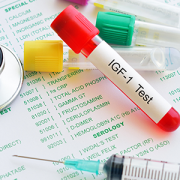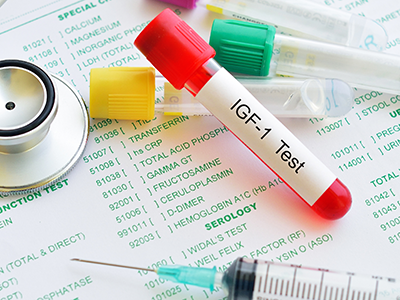Using genomics to solve a 20-year case study

“The advent of different technologies and techniques over the years allowed pieces of her diagnosis to be made – and then brought all together,” says Andrew Dauber, M.D., MMSc.
After 20 years, a patient’s family received an answer to a decades-long genetic mystery. Their daughter had two rare disorders, Angelman syndrome and P450scc deficiency, which was detected after researchers found out she had uniparental disomy, two copies of chromosome 15 from one parent and none from another.
The research paper, entitled “Adrenal Insufficiency, Sex Reversal and Angelman Syndrome due to Uniparental Disomy Unmasking a Mutation in CYP11A1,” was published on March 22, 2018, and recognized as the best novel insight paper published by Hormone Research in Paediatrics in 2018, announced at the Pediatric Endocrine Society’s Annual Meeting in Baltimore on Saturday, April 27, 2019.
By using a variety of genetic tools, including whole-exome sequencing, microarray analyses and in-vitro modeling for gene splicing, the researchers were able to confirm this patient had uniparental disomy, a recessive genetic condition. They learned that after she received two impaired copies of chromosome 15 from her father, this woman developed a hormonal problem that led to adrenal insufficiency and sex reversal. This explained why she physically presented as a female, despite having testes and a Y-chromosome. It also explained other symptoms, including developmental delays and seizures.
“It’s a unique conglomeration of symptoms, manifested by the combination of these two very rare disorders,” says Andrew Dauber, M.D., MMSc., the division chief of endocrinology at Children’s National Health System and a guiding research author of this study. “The advent of different technologies and techniques over the years allowed pieces of her diagnosis to be made – and then brought together, commencing a 20-year diagnostic odyssey.”
For example, each of the conditions this patient has is known and rare: Angelman syndrome affects about one in 10 to 20,000 people in the U.S. Typical symptoms include those observed in this patient: delayed development, intellectual disability, speech impairment and seizures. Side-chain cleavage disorder, which leads to adrenal disorders and sex reversal, is also very rare. In 2005 the chances of survival with a P450scc defect were slim, but since then more than 28 infants have been diagnosed with this gene deficiency, which is required to convert cholesterol to pregnenolone, a hormone in the adrenal gland.
Dr. Dauber notes the chances of this occurring again are highly unlikely. The odds here are one in a gazillion. In this case, one disorder unmasked another, leaving researchers with new insights into the methodology for unraveling ultra-rare genetic disorders or for more common rare conditions.
“Knowing about the gene that caused the adrenal insufficiency and understanding this etiology won’t change medical care for this patient, but it will change the way researchers think about genetic detective work and about combining different technologies,” says Dr. Dauber. “We know that genetic disorders can be complex presentations of different disorders combined. This patient didn’t have one disorder, but three.”
When asked about the significance of the award, Dr. Dauber notes that, “It’s not that other people haven’t recognized this concept before, but this case is a striking example of it. Different technologies will unveil different types of genetic changes, which is why you have to use the right technology or the right technologies in the right combination to piece together the whole picture.”
Ahlee Kim, M.D., the lead study author and a clinical research fellow at Cincinnati Children’s Hospital Medical Center, will receive the award and the honorarium.
Additional study authors include Masanobu Fujimoto, Ph.D., Vivian Hwa, Ph.D., and Philippe Backeljauw, M.D., from Cincinnati Children’s Hospital.
The research was supported by grant K23HD07335, awarded to Dr. Dauber, from the Eunice Kennedy Shriver National Institute of Child Health and Human Development of the National Institutes of Health (NIH). Additional funding included grant 1UL1TR001425 from the NIH’s National Center for Advancing Translational Sciences.












